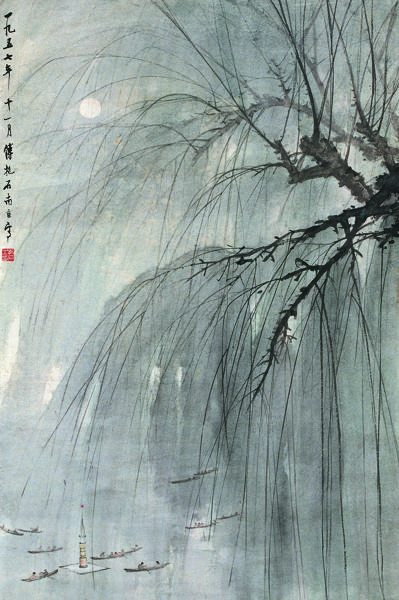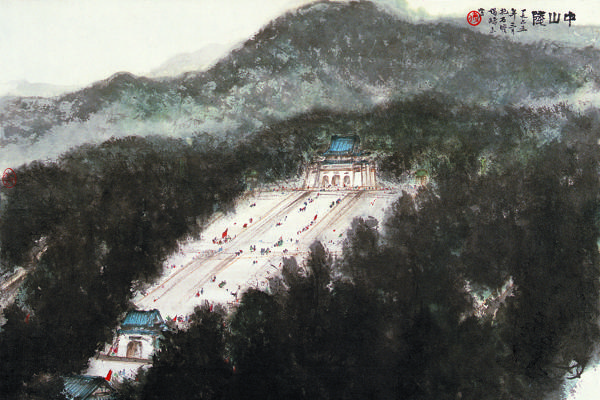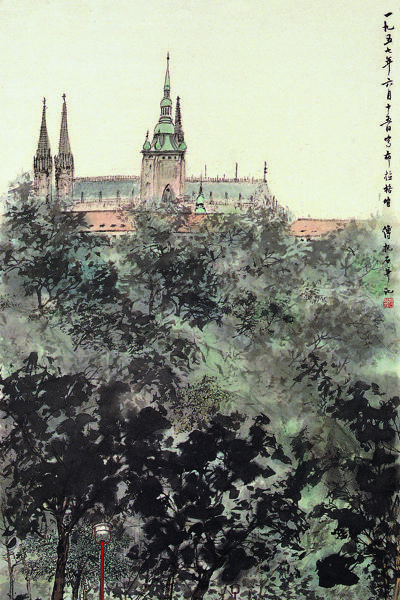
Yan’an, by Fu Baoshi, is on display in the Allow Me to Meticulously Depict the Land show in Beijing.[Photo/China Daily]
Though his late works reflect the “serving the people, serving politics” requirement for art after 1949, Fu Baoshi (1904-1965) retained a highly personal style. The signature “Baoshi wrinkle” strokes and dramatic composition make his paintings stand out among other works of his time.

[Photo by Jiang Dong/China Daily
An exhibition now showing at the National Art Museum of China showcases Fu’s distinctive career as a modern master of Chinese landscapes, which parallels his remarkable portrayals of ancient figures. Some 80 paintings, drawn from the holdings of the Nanjing Museum, stand as testaments to how Fu incorporated Western painting skills to reform traditional ink-and-water in the nearly last two decades of his life.

The Xuanwu Lake in the Moonlight.[Photo/Provided to China Daily]
The show title, Allow Me to Meticulously Depict the Land, originates from a painting by the same name, from the NAMOC collection and included in the display.
The show navigates the painter’s path of transformation that included six fruitful art travels from the 1950s to ‘60s. He achieved breakthroughs in expanding traditional brush skills; he also built up an individualist vocabulary of imagery under the special political conditions at that time.

Sun Yat-sen Mausoleum.[Photo/Provided to China Daily]
The Xuanwu Lake in the Moonlight represents Fu’s early efforts to modernize inking techniques. The work resulted from his sketching travels in the 1950s, covering areas neighboring Nanjing, Jiangsu province, where he resided for a couple of years and where scenery recurred as his favorite subject matter.

Prague Palace.[Photo/Provided to China Daily]
In this painting he lessened the usage of “cun” or “wrinkle” strokes and dabs, adopting instead watercolor techniques to create the forms. The result is a refreshing and moist texture that reflects the tranquillity on the lake at night.
